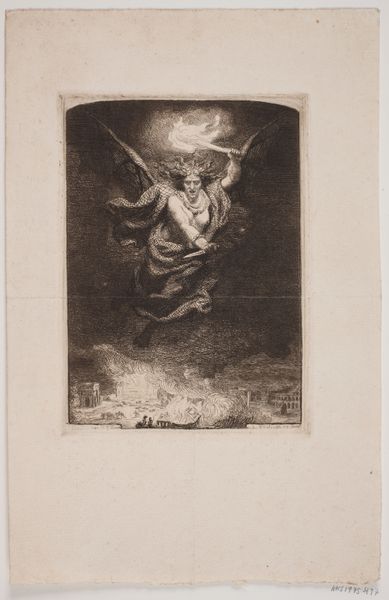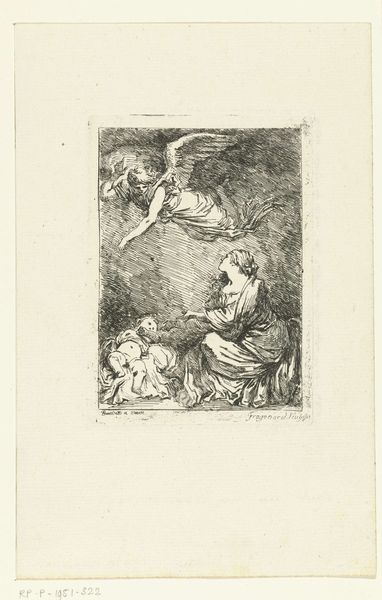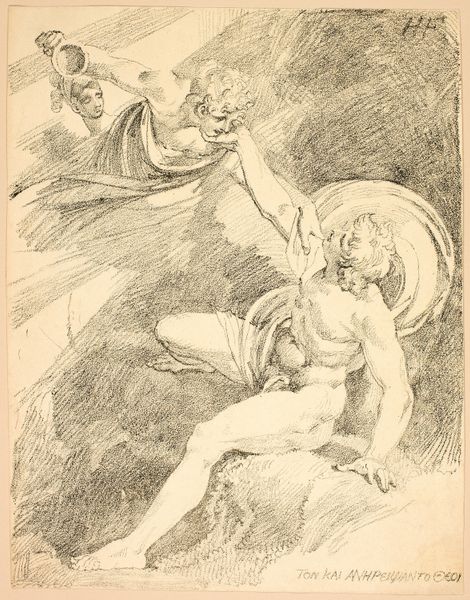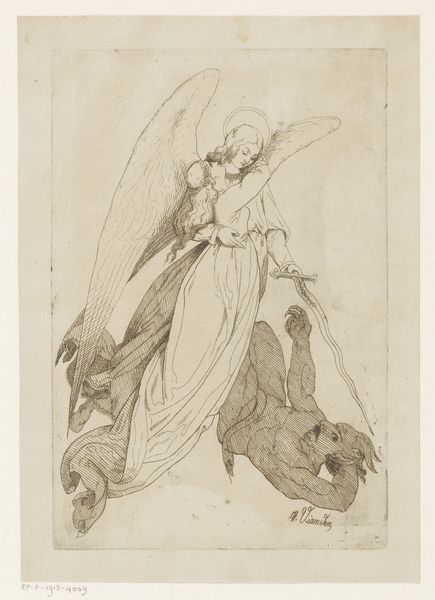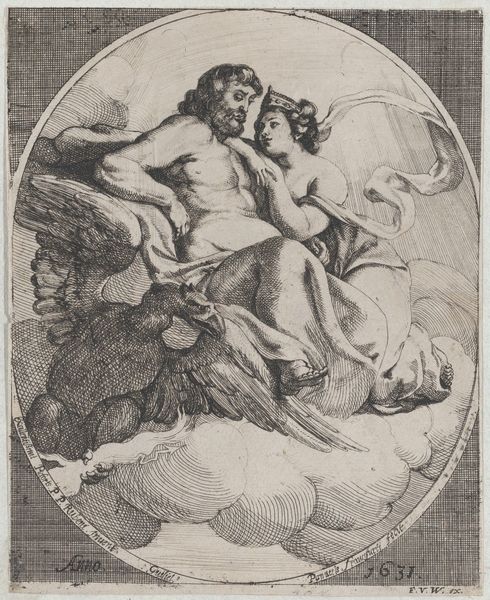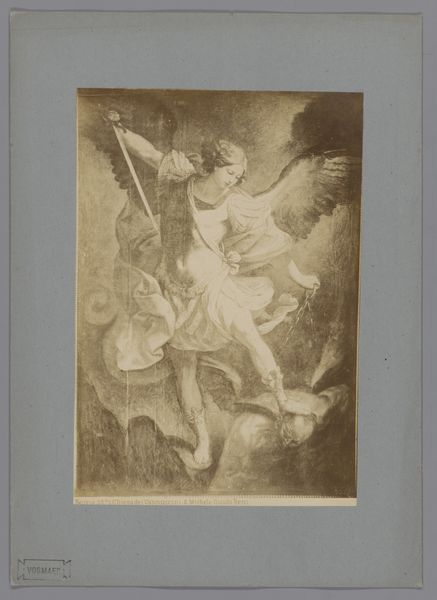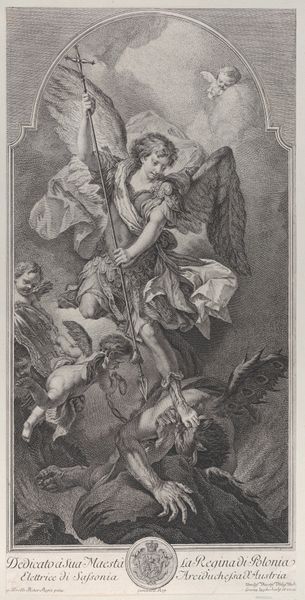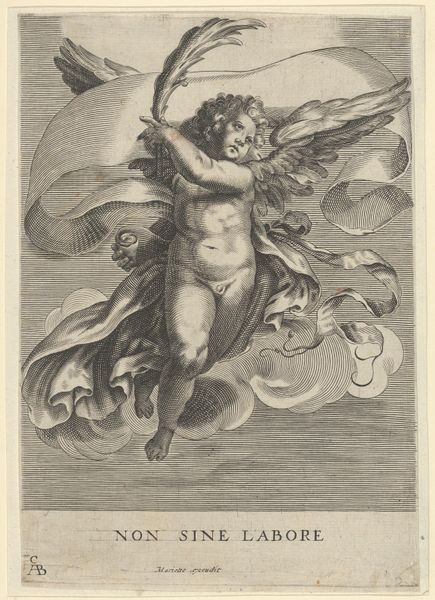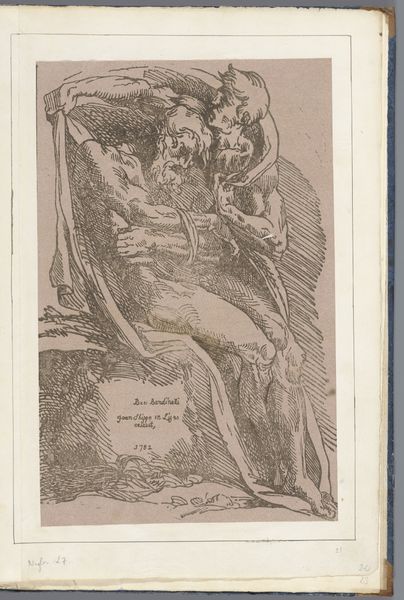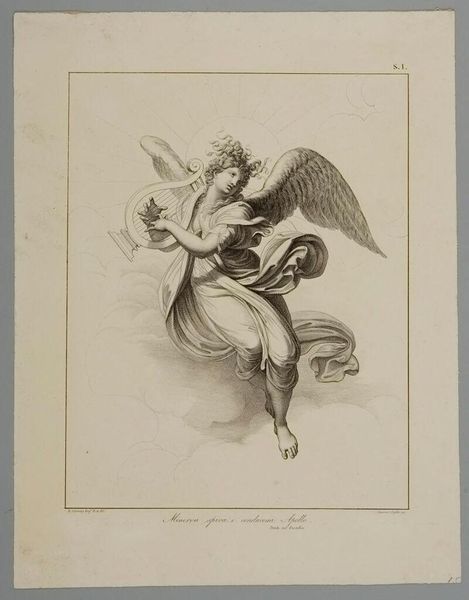
Angel of the Resurrection, from the first issue of Specimens of Polyautography Possibly 1801 - 1803
0:00
0:00
drawing, lithograph, print, paper
#
portrait
#
drawing
#
neoclacissism
#
lithograph
# print
#
figuration
#
paper
#
romanticism
#
history-painting
Dimensions: 322 × 230 mm (image/primary support); 490 × 375 mm (secondary support)
Copyright: Public Domain
Curator: Benjamin West’s lithograph, "Angel of the Resurrection," thought to originate around 1801-1803, immediately strikes one with its dynamism and sense of ascending energy. The figure is beautifully rendered. Editor: Yes, the composition is quite compelling. I see the angel, bathed in light, breaking free from earthly constraints and traditions, perhaps reflective of the burgeoning artistic and societal upheavals of the era. Tell me more about the social context surrounding this image. Curator: It’s fascinating, because this piece was part of a larger project called "Specimens of Polyautography." This venture aimed to make art more accessible, democratizing printmaking through lithography. Consider how groundbreaking this was—art moving away from exclusive circles. Editor: Lithography democratizing art production—it certainly aligns with themes of revolution! The figure itself seems to embody a new kind of liberation—challenging gender and religious roles. I like that. I mean the androgynous portrayal challenges traditional representations of power and authority, even divine authority. What's your take? Curator: I agree completely. It speaks to challenging societal norms and exploring evolving ideas of identity. I see how he uses hatching and cross-hatching, giving real texture and a powerful three-dimensionality. Editor: True, but even the line quality, while appearing chaotic at first glance, offers an underlying structural unity. This contributes to the work's overall aesthetic cohesion, making the subject both visceral and divinely elegant. Curator: Agreed. Overall, seeing it this way I notice a call for more equitable representation, more power for people in a shifting political landscape. It's pretty on the nose. Editor: This detailed yet structurally complex work allowed me to further appreciate not only West’s skill, but to discover a wider understanding of how this movement might've played out in that time. Curator: Absolutely, I have definitely gained new ideas regarding the radical potential embedded within even seemingly traditional artworks, making it much more approachable as an icon.
Comments
No comments
Be the first to comment and join the conversation on the ultimate creative platform.
